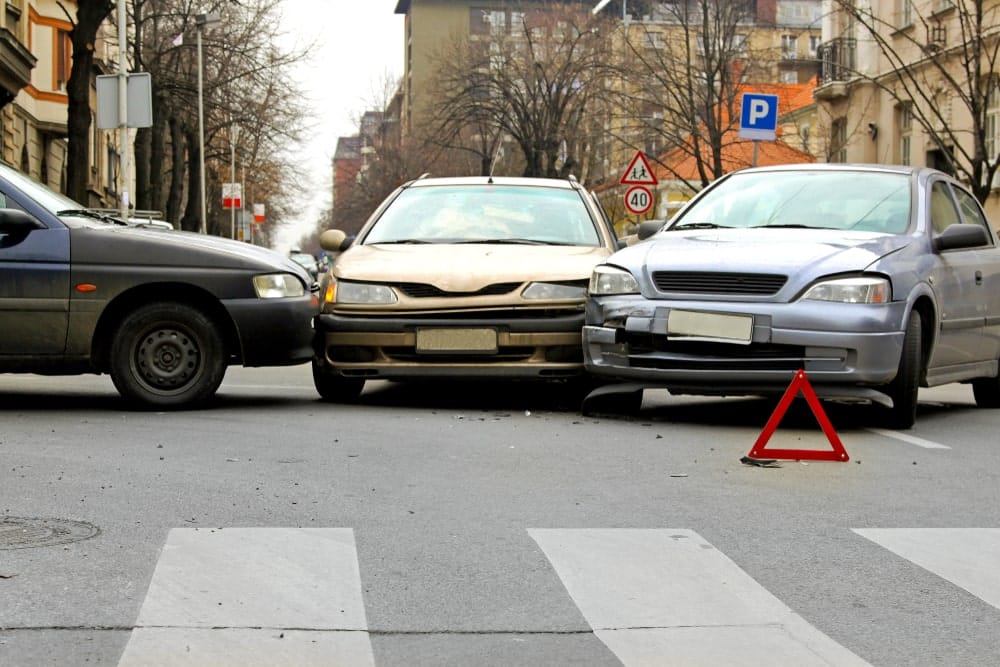Compare car insurance policies with Compare the Market
Savvy is partnered with Compare the Market to help you compare a range of car insurance policies from a panel of trusted providers.
Home > Car Insurance > Whose Insurance Pays in a Multi-Car Accident?
Find out more about how to determine who pays for damage in a multi-car accident with Savvy in our helpful guide.
Author
Savvy Editorial TeamFact checked

Multi-car accidents can be chaotic and overwhelming, leaving everyone involved unsure of who is responsible for covering the damages. In Australia, determining which insurance policy pays in a multi-car accident depends on the specific circumstances and who was at fault. Let's explore the various scenarios and how insurance coverage comes into play in these situations.
In multi-car accidents, the first step is to determine fault or negligence. Car insurance companies and police may investigate the incident, gather evidence and interview witnesses to establish who caused the collision. There are two main outcomes when it comes to determining fault, as well as other factors to keep in mind during this process:
A single at-fault driver
If the investigation concludes that one driver was at fault for the multi-car accident, their insurance provider is responsible for paying for the damages to the other vehicles involved. This includes property damage and any other related costs. The at-fault driver's comprehensive coverage, third party fire and theft coverage or third party property damage coverage will typically come into play.
If they’re also at fault for injuries, the at-fault driver’s compulsory third party (CTP) insurance can also cover medical costs and compensation for these. What CTP insurance covers exactly will depend on where you live in Australia, so it’s important to double-check if you’re unsure.
Multiple at-fault drivers
However, it’s important to note that fault may be split among multiple drivers. Insurance companies may divide the liability percentages based on the evidence, with each driver's insurance covering the damages according to their assigned share of responsibility.
For example, in a situation where a car rear-ending another vehicle leads to a chain reaction of rear-ending, each car which rear-ended another would be considered at fault for the vehicle they directly damaged. In this case, the first car which was rear-ended wouldn’t be considered at fault.
Uninsured or underinsured drivers
If one of the drivers involved in the multi-car accident is uninsured, the situation becomes more complex, especially if they’re considered to be solely at fault. In such cases, the parties which aren’t at fault (or their insurers) can seek reimbursement directly from the uninsured driver. However, most insurance policies offer coverage for damage caused by an uninsured driver, though this is typically capped at $5,000.
Excess payments
Keep in mind that in multi-car accidents, each driver may have to pay an excess outlined in their insurance policy, even if they aren’t at fault. The excess is a predetermined amount the policyholder agrees to pay towards the claim and the insurance company covers the remaining costs. Whether you have to pay an excess may depend on the nature of the claim and your policy’s terms and conditions.
Documenting the accident
Regardless of the number of vehicles involved, it’s crucial to document the accident thoroughly. Take photos of the scene, obtain contact and insurance information from all drivers involved and gather witness statements and contact information if possible. Reporting the accident to the police and your insurance company promptly is essential to expedite the claims process.
Disclaimer:
Savvy (ABN 78 660 493 194, ACR 541 339) provides readers with a variety of car insurance policies to compare. Savvy earns a commission from our partnered insurers each time a customer buys a car insurance policy via our website. All purchases are conducted via our partners’ websites. The integrity of our comparison service is unaffected by our partnerships with those businesses and our effort remains to bring further brands that do not already use our comparison service onboard.
Savvy’s comparison service includes selected products from a panel of trusted insurers and does not compare all products in the market. Any advice presented above or on other pages is general in nature and doesn’t consider your personal or business objectives, needs or finances. It’s always important to consider whether advice is suitable for you before purchasing an insurance policy. We always recommend readers to consult the Product Disclosure Statement (PDS) of different policies before purchasing your car insurance.
Quantum Savvy Pty Ltd (ABN 78 660 493 194) trades as Savvy and operates as an Authorised Credit Representative 541339 of Australian Credit Licence 414426 (AFAS Group Pty Ltd, ABN 12 134 138 686). We are one of Australia’s leading financial comparison sites and have been helping Australians make savvy decisions when it comes to their money for over a decade.
We’re partnered with lenders, insurers and other financial institutions who compensate us for business initiated through our website. We earn a commission each time a customer chooses or buys a product advertised on our site, which you can find out more about here, as well as in our credit guide for asset finance. It’s also crucial to read the terms and conditions, Product Disclosure Statement (PDS) or credit guide of our partners before signing up for your chosen product. However, the compensation we receive doesn’t impact the content written and published on our website, as our writing team exercises full editorial independence.
For more information about us and how we conduct our business, you can read our privacy policy and terms of use.
© Copyright 2024 Quantum Savvy Pty Ltd T/as Savvy. All Rights Reserved.
Our consultant will get in touch with you shortly to discuss your finance options.
